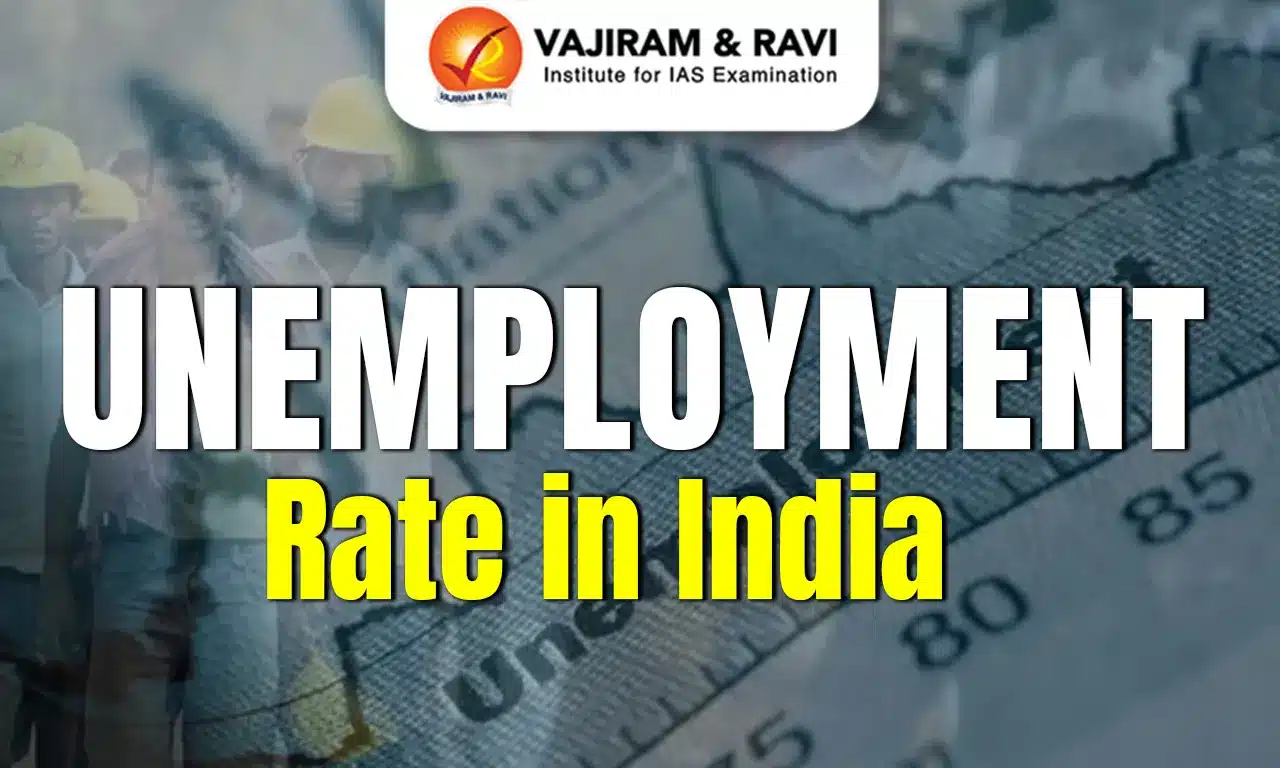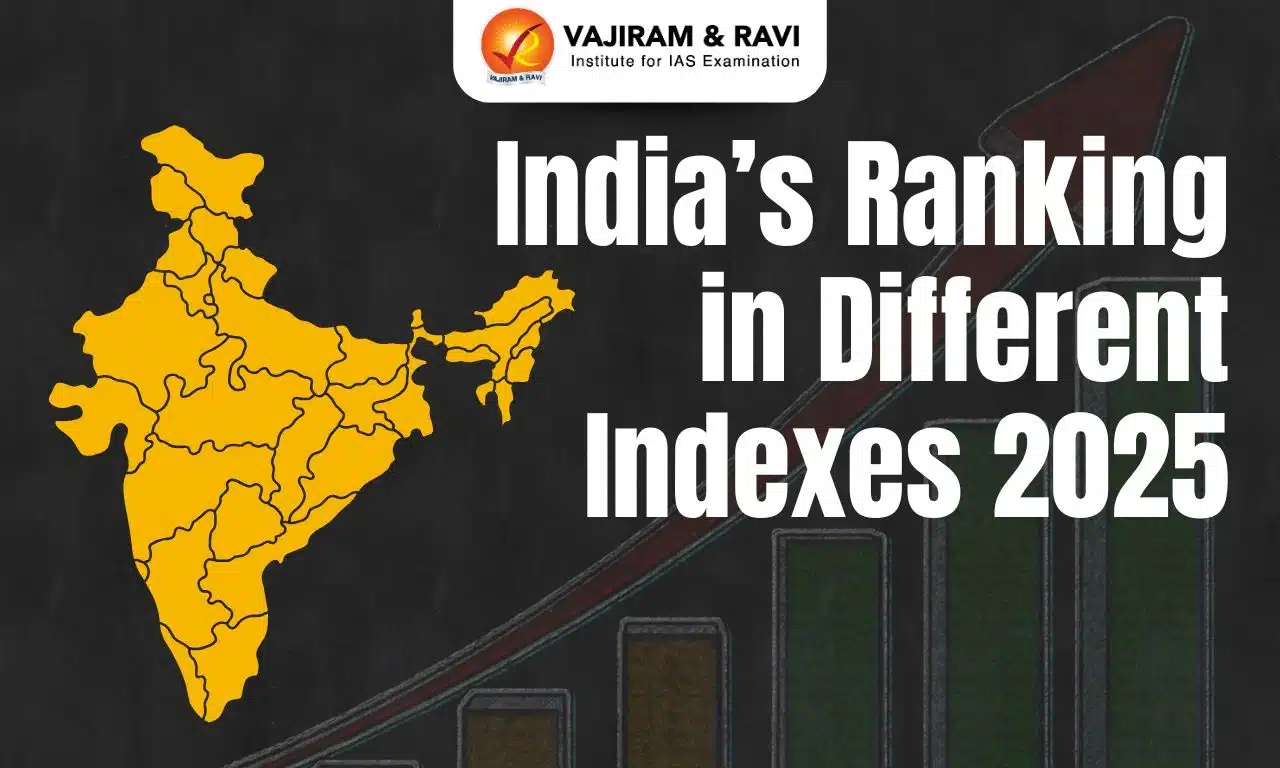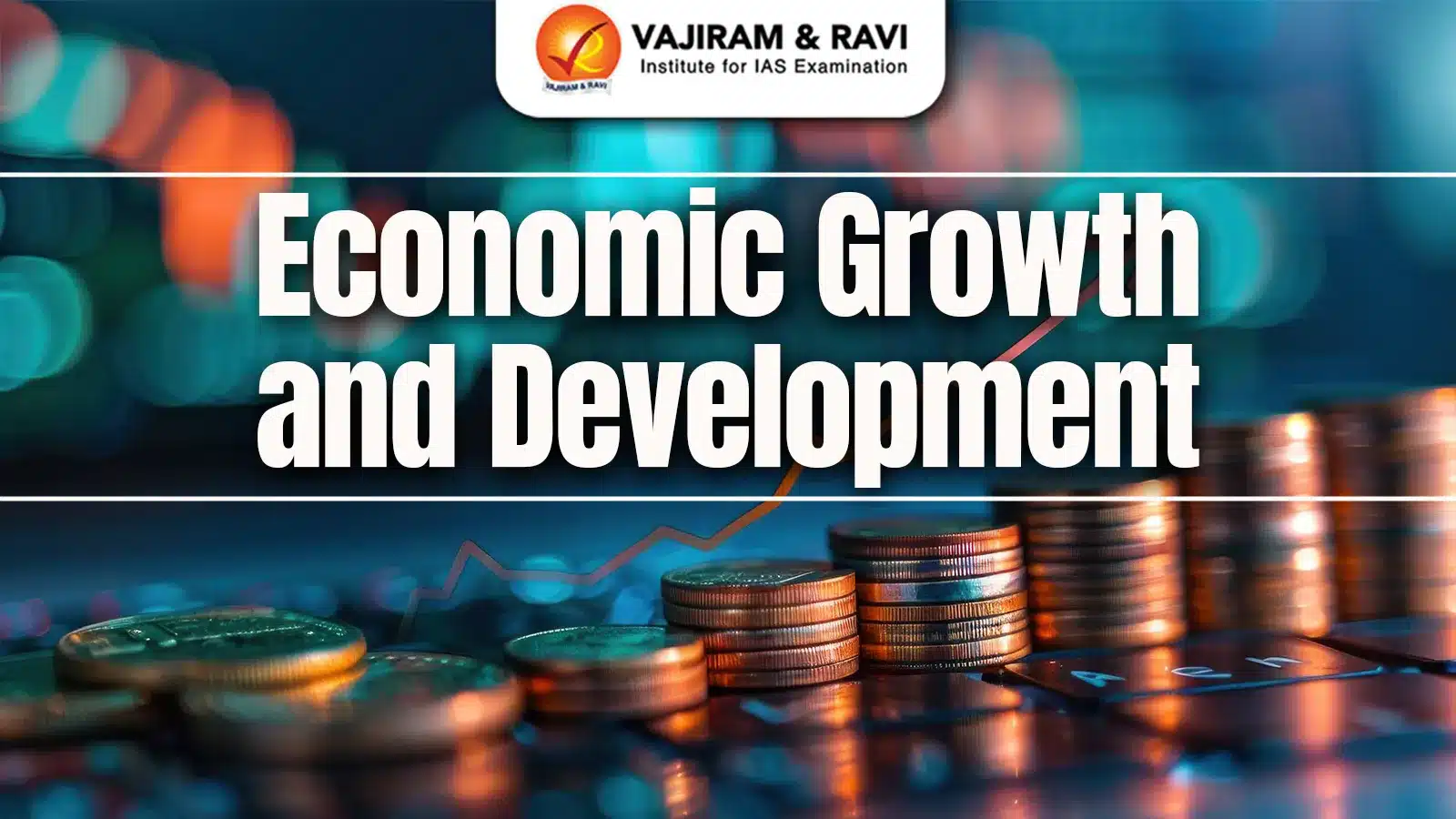Unemployment rate in India has been a major challenge, but has seen a significant improvement in recent years, with some fluctuations. According to the Economic Survey 2024–25, the unemployment rate in India declined to 3.2% in 2023–24, a significant improvement from 6% in 2017–18.
Unemployment rate in India also highlights significant disparities across rural and urban areas, compounded by automation and skill mismatches. To address these challenges, efforts must focus on diversifying rural employment, enhancing private sector participation, and aligning skill development with industry demands to create sustainable job opportunities.
Unemployment Meaning
Unemployment refers to the condition where individuals actively seek employment but are unable to secure a job. It serves as a crucial indicator of a nation’s economic health. The unemployment rate, a widely used metric, is calculated by dividing the number of unemployed individuals by the total labour force.
- According to the International Labour Organisation (ILO), unemployment is defined as being out of a job, available for work, and actively searching for employment.
- Therefore, an individual who has lost work but does not look for another job is not unemployed.
Unemployment Types
Unemployment Types include structural unemployment caused by industry changes, cyclical unemployment due to economic downturns, frictional unemployment during job transitions, seasonal unemployment in specific industries, and disguised unemployment in underutilised labour.
- Involuntary Unemployment: This represents a scenario where individuals actively seek jobs but cannot find any due to the excess labour supply.
- For Example, Fresh graduates in urban areas struggle to secure employment despite multiple applications.
- Voluntary Unemployment: This occurs when individuals choose not to work despite job availability, often due to dissatisfaction with pay, job quality, or dignity concerns.
- For Example, A highly qualified engineer refusing a low-paying customer service job.
- Structural Unemployment: Results from changes in the economy, creating mismatches between job requirements and workforce skills.
- For Example, Factory workers lose jobs due to automation in manufacturing industries.
- Seasonal Unemployment: Affects workers in industries with seasonal demand, leading to temporary joblessness during off-seasons.
- For Example, Tourist guides and hotel staff face unemployment during the off-peak travel season.
- Cyclical Unemployment: This occurs due to economic downturns when businesses lay off workers during recessions but rehire them during recovery phases.
- For Example Layoffs in the retail sector during economic slumps due to reduced consumer spending.
- Disguised Unemployment: Found in sectors where excess workers contribute little or no additional productivity.
- For Example, Multiple interns in an office duplicate tasks that do not add value to operations.
- Frictional Unemployment: Temporary unemployment during job transitions, as individuals leave one job to search for another.
- For example, A software developer quit to find a better role in a different company.
Unemployment Causes
Unemployment causes in India include reasons like caste-based discrimination, sluggish growth, and overpopulation. Seasonal agriculture, informal sectors, education and skill gaps, automation, and limited accessibility further hinder job creation, reflecting the complex dynamics of India’s labour market.
- Sluggish Economic Growth: The underdeveloped economy fails to generate sufficient jobs to meet the demands of a rapidly growing population, resulting in widespread unemployment.
- Overpopulation: Rapid population growth exacerbates job scarcity, with the unemployment rate reaching concerning levels, such as 11.1% during the 10th Five-Year Plan period.
- Seasonal Nature of Agriculture: The agriculture sector is largely seasonal and offers only temporary employment, leaving a significant part of the rural population jobless during off-seasons.
- Informal Sector Challenges: The majority of the workforce (Gig Workers) operates in unorganised sectors with low wages and poor job security, which makes them perceive their employment as inadequate.
- Underperforming Service Sector: Despite contributing significantly to GDP, the service sector in India employs only a small fraction of the workforce compared to developed countries.
- Mismatched Education: Education sector in India fail to equip students with industry-relevant skills, rendering a large number of graduates unemployable. For example, 80% of India’s 1.5 million engineering graduates lack employable skills.
- Skill Gaps in Emerging Industries: Job seekers often lack the technical and soft skills needed for new-age industries like Artificial Intelligence, data analytics, and robotics, limiting their employability.
- The Economic Survey 2024 highlights AI’s potential to disrupt India’s job market, urging strategies to mitigate its risks while leveraging its benefits.
- Limited Accessibility: Barriers such as illiteracy, poor communication skills, inadequate childcare, and lack of transportation hinder workforce participation, particularly among marginalised groups.
- Impact of Automation: Automation and AI have reduced traditional jobs while creating demand for specialised skills in machine learning, blockchain, and similar technologies.
Unemployment Rate in India
Unemployment Rate in India, according to the latest Periodic Labour Force Survey (PLFS), declined to 3.2% in 2023–24, a significant improvement from 6% in 2017–18. However, it has been slightly increased as compared to the previous year, where the unemployment rate was 3.1%.
Present Unemployment Rate in India
Present unemployment rate in India, in usual status, is 3.2%, as per latest Periodic Labour Force Survey, while in current weekly status, it is 4.9%. Starting from May 15, 2025, the Indian government will begin releasing unemployment data on a monthly basis, shifting away from the previous quarterly and annual reporting schedule.
- The Ministry of Statistics and Programme Implementation (MoSPI) has announced that the initial report will include data for January to March 2025, with subsequent monthly updates thereafter.
- This change is intended to provide quicker and more detailed information about the country’s labour market, especially at the district level.
- The availability of more precise data will help policymakers design and implement targeted strategies for both urban and rural areas.
Unemployment Rate in India 2024
Unemployment Rate in India 2024, according to the latest Periodic Labour Force Survey (PLFS), is 3.2% in 2023–24 in the usual status category. However, in the Current Weekly Status, the unemployment rate for individuals aged 15 and above decreased to 4.9% in 2024, down from 5% in the previous year. Following is the status of the unemployment rate in india in the current weekly status category.
- Rural and Urban Unemployment Trends: The overall decrease in unemployment was mainly due to a slight drop in rural unemployment, which fell from 4.3% to 4.2%. Both rural men and women experienced small improvements.
- In contrast, urban unemployment stayed steady at 6.7%, with male unemployment rising slightly from 6.0% to 6.1%, while female unemployment declined notably from 8.9% to 8.2%.
- LFPR at National Level: At the national level, the LFPR—the percentage of people working or seeking work—remained mostly stable at 56.2%.
- However, using the Principal and Subsidiary Status (PS+SS) method, LFPR showed a minor drop from 59.8% in 2023 to 59.6% in 2024.
- Unemployment Rate Variations by Measurement: While the PLFS reported a 4.9% unemployment rate for those aged 15 and above, the all-India unemployment rate under PS+SS slightly increased from 3.1% to 3.2%, showing mixed results depending on the measurement.
- Urban LFPR Changes: In urban areas, LFPR increased for men from 74.3% to 75.6%, for women from 25.5% to 25.8%, and overall from 50.3% to 51.0%.
- Worker Population Ratio (WPR) Trends: The Worker Population Ratio (WPR), representing the working population, stayed mostly steady nationally (53.4% to 53.5%) and rose in urban areas (47.0% to 47.6%), but slightly declined under PS+SS from 58.0% to 57.7%.
Unemployment Rate in India Last 10 Years
Unemployment rate in india last 10 years has been subject to fluctuations due to market trends and events such as covid1-9 pandemic, etc. According to the Economic Survey 2024–25, the unemployment rate in India declined to 3.2% in 2023–24, a significant improvement from 6% in 2017–18.
Unemployment Rate in India State Wise
Unemployment Rate in India State Wise exhibits significant variation across states. Lakshadweep tops the list for unemployment among those aged 15 to 29, with a rate of 36.2%, followed by the Andaman and Nicobar Islands at 33.6%.
- Kerala, known for its highest literacy rate, records an unemployment rate of 29.9%, with 47.1% of women and 19.3% of men unemployed, as per the survey.
- Additionally, Kerala has a lower Worker-Population Ratio (WPR) compared to several northern and northeastern states, indicating a smaller proportion of employed individuals within its population.
- These are the top 10 Indian states and union territories with the highest rates of unemployment:
|
Rank |
Indian State/Union Territory |
Male unemployed (%) |
Female unemployed (%) |
Total unemployed (%) |
|
1 |
Lakshadweep |
26.2 |
79.7 |
36.2 |
|
2 |
Andaman & Nicobar Islands |
24 |
49.5 |
33.6 |
|
3 |
Kerala |
19.3 |
47.1 |
29.9 |
|
4 |
Nagaland |
27.9 |
26.6 |
27.4 |
|
5 |
Manipur |
19.9 |
27.5 |
22.9 |
|
6 |
Ladakh |
11.4 |
38.3 |
22.2 |
|
7 |
Arunachal Pradesh |
21.9 |
19.6 |
20.9 |
|
8 |
Goa |
13.2 |
31 |
19.1 |
|
9 |
Punjab |
16.7 |
24.5 |
18.8 |
|
10 |
Andhra Pradesh |
16.4 |
19.7 |
17.5 |
Measuring Unemployment in India
India employs various methodologies to measure unemployment, reflecting its complex labour market dynamics across formal and informal sectors. Multiple agencies and surveys provide insights into employment trends and labour force engagement.
Primary Agencies
Primary agencies responsible for collecting and analysing unemployment data are as follows:
- Ministry of Labour and Employment: Through the Labour Bureau and Directorate General of Employment and Training (DGE&T), collect data on organised sector employment and unemployment under various labour laws.
- National Sample Survey Office (NSSO): This office conducts annual and quinquennial surveys on employment and unemployment, providing detailed data on labour force dynamics.
- Central Statistical Organisation (CSO): Conducts Economic Census, collecting employment data across agricultural and non-agricultural enterprises.
Key Methodologies Used to Measure Unemployment in India
The following methodologies collectively provide a comprehensive picture of employment and unemployment trends in India’s complex labour market, addressing both formal and informal sectors.
- Periodic Labour Force Survey (PLFS): Conducted annually by the Ministry of Statistics and Programme Implementation (MoSPI) since 2017-18.
- Census Data (Decennial): Conducted every 10 years by the Registrar General and Census Commissioner, offering insights into workforce distribution, unemployment levels, and main and marginal workers.
- Economic Census by CSO: Gathers employment data periodically across agricultural and non-agricultural enterprises, providing a broad understanding of enterprise-based workforce dynamics.
- NSSO Employment-Unemployment Surveys: Conducted quinquennially and annually, provide detailed employment and unemployment data, analysing labour market dynamics using demographic, social, and economic parameters.
- Employment Exchange Data: The Employment Market Information Programme (EMIP), collects statistics on job vacancies and registrations, reflecting trends in the organized sector but limited to formal employment.
- Centre for Monitoring Indian Economy (CMIE): Conducts frequent surveys with shorter reference periods, offering real-time insights into unemployment trends, particularly in informal and dynamic labour markets.
Periodic Labour Force Survey (PLFS)
Periodic Labour Force Survey (PLFS) has been conducted annually by the Ministry of Statistics and Programme Implementation (MoSPI) since 2017-18. Measures Labour Force Participation Rate (LFPR), Worker Population Ratio (WPR), and unemployment rates using “usual status” and “current weekly status.”
- Usual Status (UPSS): It categorises individuals based on their primary economic activity over the last year, distinguishing between principal and subsidiary activities to capture long-term employment trends.
- Current Weekly Status (CWS): Identifies employment or unemployment based on activities during the seven days preceding the survey, effectively capturing short-term unemployment trends.
- Worker Population Ratio (WPR): This represents the proportion of the working-age population that is currently employed, providing insights into overall workforce utilisation.
- Labour Force Participation Rate (LFPR): Measures the proportion of the working-age population that is either employed or actively seeking employment, reflecting overall workforce engagement.
- Periodic Labour Force Survey (PLFS) Recent Updates:
- The National Statistical Office (NSO), operating under the Ministry of Statistics and Programme Implementation (MoSPI), has introduced significant upgrades to its Periodic Labour Force Survey (PLFS) to provide more frequent and detailed labour market data for India.
- Beginning January 2025, the updated PLFS will offer monthly estimates of essential employment metrics, including the Labour Force Participation Rate (LFPR), Worker Population Ratio (WPR), and Unemployment Rate (UR), following the Current Weekly Status (CWS) method at the national level.
Challenges in Measuring Unemployment In India
Measuring unemployment in India is fraught with challenges due to the informal nature of jobs, short-term employment patterns, and socio-economic factors. These complexities often hinder the accurate representation of the labour market. The key challenges in measuring unemployment in India are as follows:
- Informal Nature of Jobs: A large informal sector complicates consistent employment classification as individuals often work intermittently across various activities.
- Short-Term Employment: Workers may alternate between casual labour, seasonal jobs, and unemployment within a year, making accurate categorisation challenging.
- Exclusion of Willing Workers: Social norms, especially for women, prevent many from actively seeking work.
- For example, several rural women reported a willingness to work if jobs were available at home, yet they remain excluded from the labour force.
- Economic Disruptions: Events like the 2020 lockdown led to temporary job losses not fully captured by PLFS due to aggregation over time.
Unemployment in India Impacts
Unemployment in India has far-reaching consequences, impacting individuals, society, and the economy. It leads to exploitation, social unrest, and underutilization of human resources, hindering national development. The key consequences of Unemployment in India are as follows:
- Under-utilisation of Human Resources: The potential of the workforce remains unutilized, resulting in a loss of valuable human resources. Proper utilization of these resources could significantly contribute to national economic growth.
- Rising Poverty: Lack of income due to unemployment leads to increased poverty, higher debt burdens, and a rise in economic hardships for affected individuals and families, especially during times of high inflation.
- Social Issues: Unemployment fuels societal problems such as corruption, gambling, and unethical behaviour. These issues undermine law and order and disrupt societal harmony.
- Industrial Disputes: Unemployment contributes to increased disputes between employers and employees, disrupting workplace harmony and further escalating joblessness.
- Exploitation of labour: Unemployed individuals are compelled to accept low wages and work under poor conditions, leading to their exploitation.
- Political Instability: Joblessness breeds dissatisfaction with the government, prompting individuals to engage in disruptive activities and weakening political stability. This, in turn, hinders economic progress.
Unemployment in India Government Initiatives
The Government has launched several initiatives to tackle unemployment, focusing on skill development, job creation, and livelihood enhancement. These programs address urban and rural employment challenges while boosting employability across sectors. Key Employment Schemes and Initiatives are as follows:
- National Career Service (NCS) Project: Transforms employment services with job matching, career counselling, skill development info, apprenticeships, and internships via the NCS Portal, Model Career Centres, and Employment Exchanges.
- Mahatma Gandhi National Rural Employment Guarantee Act (MGNREGA): Guarantees 100 days of annual wage employment for rural households, offering unskilled manual work to enhance rural livelihoods.
- Aajeevika – National Rural Livelihoods Mission (NRLM): Empowers rural poor by building institutional platforms for sustainable livelihoods and offering placement-linked skill development for youth under DDU-GKY.
- Deendayal Antyodaya Yojana – National Urban Livelihoods Mission (DAY-NULM): Reduces urban poverty by enabling self-employment and skill development, providing shelters for urban homeless, and strengthening grassroots institutions.
- Prime Minister’s Employment Generation Programme (PMEGP): A credit-linked subsidy scheme promoting self-employment by helping artisans and unemployed youth establish non-farm micro-enterprises.
- Pradhan Mantri Kaushal Vikas Yojana (PMKVY): Under the Ministry of Skill Development and Entrepreneurship, PMKVY facilitates skill certification and industry-relevant training for youth, enhancing their employability.
- National Apprenticeship Promotion Scheme (NAPS): This scheme promotes apprenticeships through financial incentives, covering employers’ 25% stipend (up to ₹1500) and basic training costs (up to ₹7500).
- Future Skills PRIME: A MeitY initiative for reskilling IT professionals in emerging technologies like AI to boost employability in the digital age.
Unemployment in India Way Forward
Addressing unemployment in India requires a multifaceted approach focusing on skill development, rural diversification, private sector engagement, and creating quality jobs. These measures aim to build a sustainable and inclusive workforce as explained below:
- Skill Development: Vocational training must align with industry needs, and partnerships between academia and industries should be strengthened to address skill gaps and enhance workforce employability.
- Diversify Rural Employment: Promoting rural manufacturing and entrepreneurship can reduce reliance on agriculture and create diverse, sustainable job opportunities, reducing unemployment and underemployment in rural areas.
- Encourage Private Sector Involvement: Simplifying regulations and offering incentives can boost private sector job creation while encouraging investments in skill development initiatives to enhance employment opportunities.
- Quality Job Creation: Focus on creating stable and secure jobs that offer financial stability, career growth, and emotional well-being, addressing unemployment challenges holistically.
Unemployment Rate in India UPSC PYQs
Q1. Disguised unemployment generally means (UPSC Prelims 2013)
(a) large number of people remain unemployed
(b) alternative employment is not available
(c) marginal productivity of labour is zero
(d) productivity of workers is low
Ans: (c)
Q2. Most of the unemployment in India is structural in nature. Examine the methodology adopted to compute unemployment in the country and suggest improvements. (UPSC Mains 2023)
Last updated on June, 2025
→ UPSC Notification 2025 was released on 22nd January 2025.
→ UPSC Prelims Result 2025 is out now for the CSE held on 25 May 2025.
→ UPSC Prelims Question Paper 2025 and Unofficial Prelims Answer Key 2025 are available now.
→ UPSC Calendar 2026 is released on 15th May, 2025.
→ The UPSC Vacancy 2025 were released 1129, out of which 979 were for UPSC CSE and remaining 150 are for UPSC IFoS.
→ UPSC Mains 2025 will be conducted on 22nd August 2025.
→ UPSC Prelims 2026 will be conducted on 24th May, 2026 & UPSC Mains 2026 will be conducted on 21st August 2026.
→ The UPSC Selection Process is of 3 stages-Prelims, Mains and Interview.
→ UPSC Result 2024 is released with latest UPSC Marksheet 2024. Check Now!
→ UPSC Toppers List 2024 is released now. Shakti Dubey is UPSC AIR 1 2024 Topper.
→ Also check Best IAS Coaching in Delhi
Unemployment Rate in India FAQs
Q1. What is India's current unemployment rate?+
Q2. Which state is no. 1 in unemployment in India?+
Q3. Which unemployment is high in India?+
Q4. What is the unemployment rate in India in 2025?+
Q5. Why India has high unemployment rate?+




















